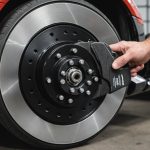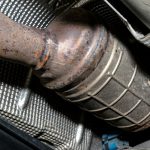Every car owner will at some point face the challenge of replacing faulty parts in their vehicle. One such part that occasionally requires replacement is the clutch. The clutch is an essential component of your car that facilitates the smooth transitioning of gears. However, in the UK, where manual transmission is more popular, it wears out faster and needs frequent replacement. You may wonder if it is possible to replace a clutch in a front-wheel-drive car without professional tools. It sure sounds like a task for the professionals, but with clear guidance and some patience, you can do it yourself. This article aims to guide you through the process of replacing your car’s clutch without the need for professional tools.
Identify the Problem
Before rushing to replace your clutch, it’s essential first to ascertain that the clutch is the problem. The clutch can fail for various reasons, from normal wear and tear to oil contamination and mechanical failure. Identifying the problem will save you time and unnecessary expenses.
Also to read : How can you accurately adjust the idle speed in UK cars with carbureted engines?
A common sign of a faulty clutch is difficulty in changing gears or a noticeable change in the way your clutch pedal feels. You might also hear unusual noises when the clutch is engaged. If you experience any of these signs, it’s high time you checked your clutch.
Gather the Necessary Tools
To replace a clutch without professional tools, you’ll have to gather some basic tools. Remember, the goal here is to do it yourself without incurring extra costs. The list of tools you’ll need includes: a set of spanners, a pair of pliers, a jack and axle stands, a socket set, and a claw hammer.
Also to read : What are the detailed steps to replace and dispose of a car battery in the UK?
These tools are common in most UK households or can be borrowed from neighbours. If you don’t own these tools, you could consider buying them as they are not very expensive and can be used for other car or home maintenance tasks.
Remove the Old Clutch
Once you’ve gathered your tools, it’s time to get your hands dirty. First, you’ll need to disconnect the battery and remove the air box to access the transmission. Next, use the jack to raise your car off the ground and secure it with the axle stands.
Removing the old clutch involves detaching the transmission from the engine. Start by disconnecting the driveshafts and drain the transmission fluid. After that, unbolt the transmission from the engine and gently lower it. This task may require some assistance due to the weight of the transmission. With the transmission out of the way, you can now access and remove the old clutch.
Install the New Clutch
The installation process is more or less the reverse of the removal process. First, clean the flywheel with brake cleaner before installing the new clutch. The new clutch kit should come with a clutch alignment tool. This tool is essential for aligning the clutch disc with the flywheel.
Once you have aligned the clutch disc, you can then install the pressure plate. Ensure that you tighten the bolts gradually and evenly to avoid warping the plate. Now with the new clutch installed, you can reattach the transmission.
Before lowering your car, double-check all the connections and ensure that everything is tight and in place. If everything checks out, you can now lower your car and reconnect the battery. Start your car and engage the clutch to see if everything is working correctly.
Test Drive Your Car
After installing the new clutch, it’s essential to take your car for a test drive to ensure everything is working correctly. Pay attention to how the clutch feels and how smoothly your car changes gears. If there are any unusual noises or if the clutch does not engage properly, you may need to check your installation.
Remember, replacing your car’s clutch without professional tools can be a challenging task. But with patience and the right guidance, it’s a task that you can accomplish. Not only will you save money, but you’ll also gain valuable skills and experience.
Regular Maintenance and Prevention
Once you’ve successfully replaced the clutch in your front-wheel-drive car, it’s crucial to remember the importance of regular maintenance to prevent future issues. Keeping an eye on your car’s performance and addressing minor issues promptly can save you time, money, and the inconvenience of a breakdown.
As a car owner in the UK, where manual transmissions are prevalent, it’s essential to understand your vehicle’s needs. The clutch is a critical component that wears out faster due to the frequent gear changes in manual cars. Regular checks on the clutch can help you spot and address problems early. Some signs of a worn-out clutch include difficulty while shifting gears, a change in the feeling of the clutch pedal, and unusual noises when the clutch is engaged.
Moreover, you should pay attention to your driving habits. Aggressive gear changes, driving with the clutch partly engaged (known as riding the clutch), and pulling heavy loads can lead to faster wear and tear of the clutch. By adopting smoother gear changes and being mindful of how you use your clutch, you can extend the life of your clutch.
The right maintenance routine also includes regular replacement of the transmission fluid. Old, dirty transmission fluid can affect the performance of your clutch and cause premature wear. Aim to change your transmission fluid every 50,000 miles or as per the manufacturer’s recommendation.
Conclusion
In this article, we have walked you through the process of replacing a clutch in a front-wheel-drive car without professional tools in the UK. We’ve identified the problems that indicate a failing clutch, outlined the basic tools needed, and provided a step-by-step guide on removing the old clutch and installing a new one.
While replacing a clutch at home without professional tools may seem daunting, it is doable with patience, determination, and careful guidance. The process doesn’t only save you money but also equips you with useful skills. Plus, it gives you a unique sense of accomplishment.
However, remember that prevention is better than cure. Regular maintenance and mindful driving habits can prolong the life of your clutch and save you from frequent replacements. After all, a well-maintained car is not only more reliable but also safer on the road.
Remember, you should always work safely and responsibly when working on your vehicle. Never work under a car that is not properly supported, and protect your eyes and hands during the process. If you ever feel uncomfortable or unsure about a step, it’s always safer to consult with a professional.











